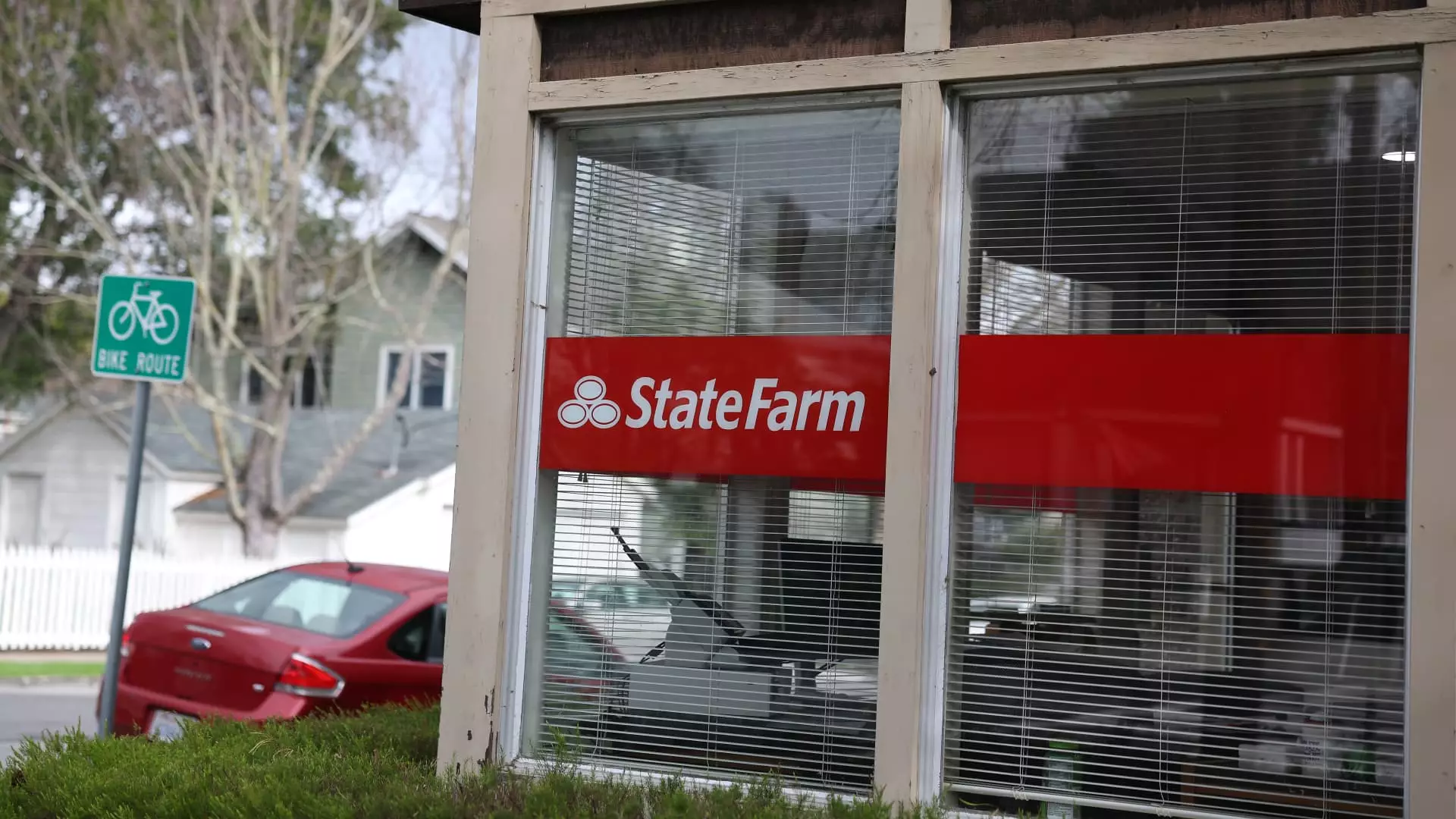As the sun sets on California homeowners, the shadow of rate hikes looms larger than ever. State Farm, the state’s largest property insurer, is currently embroiled in a contentious hearing that could decide the fate of homeowners across the Golden State. Their proposal for a significant rate increase, driven by dire financial conditions exacerbated by raging wildfires, reflects a tragic paradox: while natural disasters wreak havoc on the landscape, they simultaneously erode the financial security of those who inhabit it.
Wildfires in Los Angeles have caused unprecedented destruction, leading to estimated damages that range between $250 billion and $275 billion. Such astronomical numbers are not just figures; they represent families displaced, businesses shuttered, and lives turned upside down. In response to this catastrophe, State Farm is petitioning for emergency rate increases that could affect nearly 3 million policies held by California homeowners—essentially throwing these individuals into an emotional turmoil as they weigh their financial options.
The Titanic Analogy: A Stark Warning
During a recent administrative hearing, an attorney for the California Department of Insurance drew a poignant analogy, equating State Farm’s situation to the Titanic: the iceberg is visible, but there is still time to avert disaster. This metaphor is not just dramatic flair; it is indicative of the desperation felt within the insurance industry. If the required changes do not occur, millions of Californians could find themselves adrift in the turbulent waters of financial insecurity without the lifeboats of adequate insurance protection.
The complexity of the crisis reflects systemic issues within California’s insurance market—issues that have continually surfaced over the last decade due to a rising tide of natural disasters. The statistics are alarming: insurers have been paying out more in claims than they collect in premiums, creating an untenable environment that drives companies to curtail their operations. State Farm’s decision to halt new homeowners policies in California demonstrably illustrates the severity of this situation.
Restructuring Policies: A Necessary Evil?
As the hearings progress, the rate increase requests from State Farm have shifted—the initial proposal of a 22% increase has been tempered to 17% for homeowners, along with a staggering 38% increase for renter dwelling policies. Is this merely a corporate strategy to buffer against the losses incurred? Or is it a legitimate reaction to a market that shows no signs of stabilizing? The move has sparked contentious dialogue, with institutions like the California Department of Insurance supporting the rate hikes, while advocacy groups such as Consumer Watchdog vehemently oppose them.
William Pletcher, a lead attorney for Consumer Watchdog, argues that State Farm’s rationale lacks the necessary justification and consistency. The sudden reduction from 22% to 17% raises eyebrows—what accounts for such drastic recalibrations? Ultimately, it appears that the insurer’s credibility may be on shaky ground, further complicating their plea for financial relief.
A New Framework for Insurance Stability
In an effort to remedy this escalating crisis, California has implemented a “Sustainable Insurance Strategy” aimed at providing insurers with a framework to assess their rates more effectively. This initiative offers a glimmer of hope amidst the chaos, allowing for the integration of catastrophe modeling and improved calculations of reinsurance costs. Janet Ruiz from the Insurance Information Institute asserts that this new plan is crucial for rectifying the systemic shortcomings that have led us to this tipping point.
The question persists, however: will these measures be enough to restore confidence among homeowners and insurers alike? The market remains fickle, and the assurance of stability is fragile at best. Market experts suggest that the emergency rate increase could potentially bolster State Farm’s financial footing. Yet, one must ponder—at what cost to the average citizen who has already weathered the storms of financial uncertainty?
The Broader Implications of Rate Increases
The implications of rate increases extend far beyond an insurance company’s bottom line. They reverberate throughout communities, affecting not only homeowners and renters but also the broader economy. As California grapples with its complicated relationship with insurers, it must also contend with the shrinking pool of available policies—a reality that leaves many residents vulnerable.
State Farm’s predicament represents a microcosm of a problem that has affected various industries in California, especially those reliant on environmental stability. The state’s systemic challenges necessitate not only immediate remedies but also long-term sustainable solutions to safeguard financial stability for its residents.
In this increasingly volatile landscape, Californians must remain vigilant. The stakes are high, and as the State Farm hearings conclude, the decisions made will ripple through society, determining whether homeowners will sink or swim in these turbulent waters. While the state inches toward a framework for recovery, the lives of people hang in the balance.

